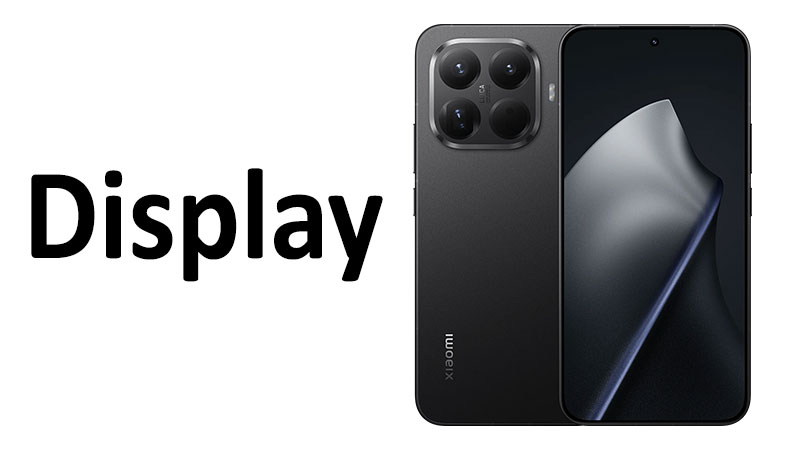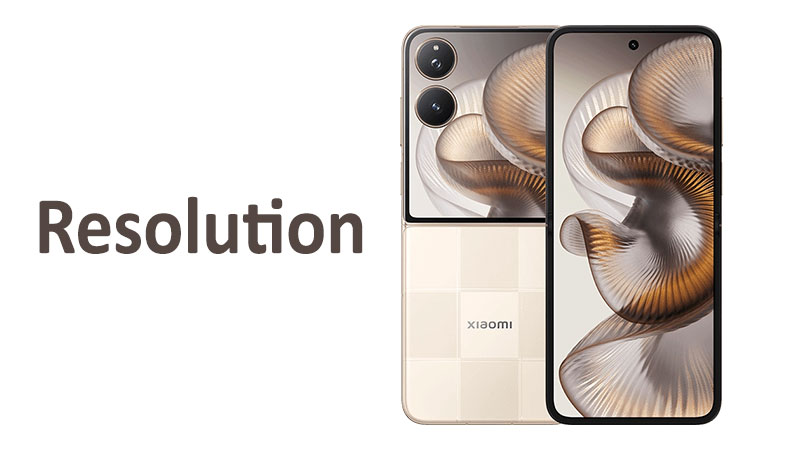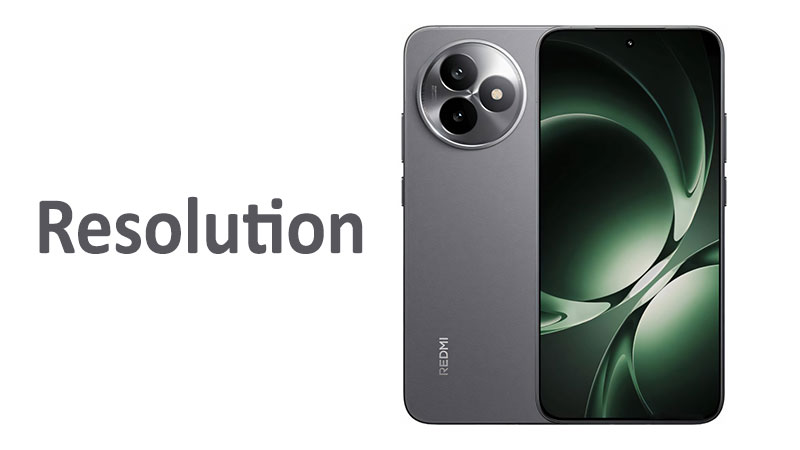The Xiaomi 15T Display is a major talking point for this new flagship device. It represents a significant step forward in mobile screen technology. Understanding its core specifications is crucial for any potential buyer. This comprehensive article delves into the resolution, quality, and advanced features of this stellar panel. We will analyze how these components deliver an exceptional viewing experience. This review will guide readers through every technical detail. We aim to help you make an informed decision on your next smartphone purchase.
The Foundational Technology: AMOLED and Color Depth
The Xiaomi 15T uses a high-quality AMOLED panel. This technology is the gold standard for modern mobile displays. AMOLED stands for Active-Matrix Organic Light-Emitting Diode. Every single pixel generates its own light. This crucial feature allows for perfect blacks. When a pixel is black, it is truly off, saving battery life. This creates a spectacular level of contrast.
Exploring the 68 Billion Color Palette
The display supports a massive 68 billion colors. This is often referred to as a 12-bit color depth. This wide color palette is extremely important for visual quality. It allows the screen to render smooth, subtle gradients. You will not see banding or color steps in complex images or videos. Content creators and photographers especially benefit from this accuracy. This expansive color range provides a true-to-life viewing experience.
Specialized Comparison: Color Volume
The ability to show 68 billion colors is superior to standard 10-bit displays. Many competing phones still use a 10-bit panel. A 10-bit screen shows approximately 1.07 billion colors. The 15T offers roughly sixty-four times the color variations. This translates to visibly richer and more accurate imagery. The Xiaomi 15T sets a new bar for color fidelity in its segment.
Buyer’s Insight: What 68B Colors Mean
For the everyday user, this depth means breathtaking visuals. Photos and videos look more vibrant and dynamic. Cinematic content is displayed exactly as the director intended. This high color volume is a core feature of a premium device. It is a vital factor in any high-end smartphone display review.
Clarity and Detail: Resolution and Pixel Density
The display’s sharpness depends on its resolution and pixel density. The Xiaomi 15T features an impressive panel size and resolution. We explore the details that create this crystal-clear picture.
Decoding the High Resolution
The screen resolution is 1280 x 2772 pixels. This resolution provides exceptional clarity for all forms of content. It ensures that text remains sharp and easy to read. Complex graphics and intricate game details are rendered perfectly. This choice of resolution is smart for balancing detail and battery efficiency. It is often described as 1.5K or QHD-like quality.
Pixel Density: The 447 ppi Advantage
The 6.83-inch screen size results in a pixel density of approximately 447 pixels per inch (ppi). A density over 300 ppi is generally considered excellent. At 447 ppi, the individual pixels are virtually invisible to the naked eye. This high density provides a smooth, continuous image. It eliminates the jagged edges or pixelation seen on lower-resolution screens. Reading e-books and viewing fine details become strain-free activities.
Screen-to-Body Ratio for Immersion
The phone boasts a sleek ~90.0% screen-to-body ratio. The bezels surrounding the display are incredibly thin. This high ratio maximizes the viewing area. It offers a truly immersive experience for video streaming and gaming. The screen dominates the front of the phone. This modern design provides a premium aesthetic feel.
Fluidity and Responsiveness: The 120Hz Refresh Rate
The refresh rate dictates how smoothly motion appears on the screen. The Xiaomi 15T comes equipped with a lightning-fast 120Hz refresh rate. This feature significantly enhances the user experience.
Benefits of 120 Hertz
A 120Hz rate means the screen refreshes 120 times every second. This is double the speed of a standard 60Hz display. The difference is immediately noticeable in several areas. Scrolling through long websites becomes silkier and more fluid. Animations and transitions across the operating system appear instantaneous.
Impact on Mobile Gaming
Mobile gamers gain a significant competitive edge. A faster refresh rate reduces motion blur in quick-paced action. It allows for quicker reaction times in supported games. The 120Hz screen ensures the display keeps up with the phone’s powerful processor. Gamers demand this level of fluidity today. The Xiaomi 15T delivers on this crucial performance aspect.
Adaptive Refresh Rate
Most modern flagship displays use adaptive technology. This means the refresh rate dynamically adjusts. For instance, it can drop to 1Hz when viewing a static image. It then scales up to 120Hz when scrolling or gaming. This smart optimization maintains a smooth experience while conserving battery power.
Advanced Dimming: 3840Hz PWM Technology
This technical feature is one of the display’s most important health benefits. The Xiaomi 15T utilizes an ultra-high frequency 3840Hz Pulse Width Modulation (PWM) dimming. This is a critical detail for user comfort.
Understanding PWM Dimming
AMOLED screens often use PWM to control brightness at low levels. They flicker rapidly to adjust the light output. Lower PWM frequencies, such as 240Hz or 480Hz, can cause eye strain. Some sensitive users may experience headaches or fatigue from this flicker.
The Power of 3840Hz
The Xiaomi 15T’s 3840Hz frequency is exceptionally high. The flicker occurs too fast for the human eye to perceive. This virtually eliminates any eye discomfort caused by dimming. The display provides a far more comfortable viewing experience in dark environments. This technology targets users who spend long hours on their phones.
Specialized Comparison: Eye Health
Many competitor phones use significantly lower PWM rates. Moving to 3840Hz places the Xiaomi 15T among the elite for eye protection. It surpasses many premium rivals in this specific metric. This focus on user well-being is a major selling point. Consumers are increasingly prioritizing eye comfort in their purchase decisions. The high-frequency PWM is a key differentiator for the Xiaomi 15T.
Visual Excellence: Brightness and HDR Standards
A great display must perform well in all lighting conditions. It also needs to support the latest high dynamic range (HDR) video formats. The Xiaomi 15T excels in both of these areas.
Extreme Peak Brightness: 3200 nits
The Xiaomi 15T display achieves a staggering 3200 nits of peak brightness. This is a truly industry-leading figure. This extreme brightness is crucial for two main reasons. First, it ensures excellent outdoor visibility. Even under direct, harsh sunlight, the screen remains perfectly readable. Second, it allows HDR content to truly shine.
High Dynamic Range Support
The display supports both Dolby Vision and HDR10+ standards. These are the two leading HDR formats for video content. HDR expands the range between the darkest and brightest parts of a scene. The 3200 nits peak brightness fully exploits this capability. It delivers stunning highlights and deep, rich shadows. Watching supported movies and shows on this display is an outstanding cinematic experience. The contrast is spectacular.
Buyer’s Insight: Practical Brightness
Remember that 3200 nits is a peak brightness level. The screen reaches this intensity in a small area when displaying HDR content. The typical brightness for general use is lower but still excellent. This sustained brightness ensures a premium viewing experience across all applications. The phone easily handles bright environments.
Durability Assessment: Gorilla Glass 7i and Protection
A high-end display requires robust protection from damage. The Xiaomi 15T uses an advanced screen cover to ensure longevity. Durability is a key concern for all smartphone users.
Introducing Corning Gorilla Glass 7i
The display is protected by Corning Gorilla Glass 7i. This is a specialized variant of Corning’s renowned protective glass. This glass focuses on improving resistance against drops. It also provides enhanced protection against scratches from daily use. It offers a crucial layer of defense for the large, expansive screen.
Mohs Level 6 Hardness Rating
The display glass achieves a Mohs level 6 hardness rating. The Mohs scale measures a material’s resistance to scratching. A level 6 rating means the screen can resist damage from common materials. Most metals and everyday objects will not scratch the surface. Fine scratches typically begin to appear at Mohs level 6. Deeper grooves appear at level 7. This rating is standard for flagship-level protection. The screen offers a solid barrier against keys or coins in a pocket.
Pros of M15T Display Protection
The combination of Gorilla Glass 7i and the Mohs level 6 rating is very strong. It provides peace of mind for accidental drops and daily wear. The glass feels smooth and robust under the finger. It maintains excellent optical clarity over time.
Cons of M15T Display Protection
No glass is completely indestructible. Deep scratches are still possible from materials harder than Mohs level 6, such as sand. Users should still consider a screen protector for maximum protection. The large screen size also makes the display slightly more vulnerable to impact. Handle the device with reasonable care.
Specialized Comparison: Xiaomi 15T vs. Predecessor
Comparing the Xiaomi 15T display to the previous generation is essential. This comparison highlights the key areas of improvement for this new model. We will examine the upgrades over the hypothetical Xiaomi 14T.
The Jump in Peak Brightness
The most dramatic upgrade is the peak brightness. The 15T’s 3200 nits significantly outperforms the 14T. The previous model likely featured a peak brightness closer to 2000 or 2500 nits. This brightness increase provides better HDR and outdoor viewing. It is a major, visible difference between the two generations.
PWM Dimming Evolution
The 15T’s 3840Hz PWM is a huge leap in eye comfort. Earlier models, including the 14T, often utilized a 1920Hz or lower PWM rate. This higher frequency on the 15T is a critical health-focused improvement. It directly reduces potential eye strain for power users.
Maintaining Core Excellence
Both generations likely share the 120Hz refresh rate and AMOLED technology. The 15T maintains the high standards for resolution and size. The improvements are focused on color depth, peak brightness, and health features. Xiaomi has refined an already excellent formula.
Storage Configuration: Pros, Cons, and Key Takeaways
The Xiaomi 15T display is packed with advanced features. Here is a summary of the strengths and weaknesses of the screen. This section helps distill the information for a final purchase decision.
Pros of the Xiaomi 15T Display
The 3840Hz PWM dimming offers unparalleled eye comfort. This feature is crucial for extended usage sessions. The 3200 nits peak brightness ensures perfect visibility outdoors. It also provides cinematic HDR performance. The 120Hz refresh rate delivers exceptionally fluid scrolling and gaming. Support for 68 billion colors provides incredible color accuracy and smooth gradients. The high-resolution 447 ppi density ensures razor-sharp text and images. The display uses the robust Gorilla Glass 7i protection.
Cons of the Xiaomi 15T Display
While the resolution is very high, it is technically 1.5K, not true 4K. Some top-tier flagships offer an even higher pixel count. The large 6.83-inch screen can be challenging for one-handed use. It might be too large for users with smaller hands. The protective glass is excellent but is not immune to damage. Users must still exercise reasonable caution. The full 3200 nits brightness is reserved for specific HDR scenes.
Important Points for Every Buyer
A buyer should prioritize the 3840Hz PWM for eye health. This feature distinguishes the 15T from many competitors. Gamers should appreciate the fast 120Hz refresh rate. Media enthusiasts will love the Dolby Vision and high peak brightness. Consider the physical size of the phone. The 6.83-inch display makes it a large device. This is a premium screen offering exceptional value.
Conclusion
The Xiaomi 15T display is a true masterpiece of mobile engineering. It combines every essential modern feature into one stunning panel. The core AMOLED technology ensures perfect blacks and infinite contrast. The 120Hz refresh rate delivers smooth, responsive interaction. Importantly, the 3840Hz PWM dimming sets a new standard for eye safety. This technology is a significant benefit for long-term smartphone use. Furthermore, the 3200 nits brightness pushes the boundaries of outdoor visibility.
The screen provides fantastic detail with its 1280 x 2772 pixel resolution. It offers an incredibly immersive experience due to the high screen-to-body ratio. Durability is well managed by the Corning Gorilla Glass 7i protection. The Xiaomi 15T display offers a compelling package for media consumption, gaming, and daily productivity. It is a defining feature of the phone. We confidently recommend this device for users who demand the best visual quality. This display elevates the entire flagship experience.
Frequently Asked Questions (FAQ)
1. What is the maximum brightness of the Xiaomi 15T display?
The Xiaomi 15T display can achieve an impressive 3200 nits of peak brightness. This is primarily used for displaying HDR content and ensuring visibility outdoors.
2. Does the Xiaomi 15T screen support HDR content?
Yes, the screen fully supports both Dolby Vision and HDR10+ high dynamic range standards. This provides a superior viewing experience for cinematic video content.
3. What is 3840Hz PWM dimming and why is it important?
3840Hz PWM is a very high frequency that the screen uses to control brightness at low levels. It reduces screen flicker, significantly minimizing eye strain and fatigue for users.
4. What type of protective glass is used on the display?
The Xiaomi 15T utilizes Corning Gorilla Glass 7i. This specialized glass offers enhanced protection against scratches and accidental drops.
5. Is the 120Hz refresh rate adaptive?
Yes, the 120Hz refresh rate is dynamic and adaptive. The phone adjusts the rate automatically based on the content. This ensures optimal smoothness while helping to conserve battery life.



